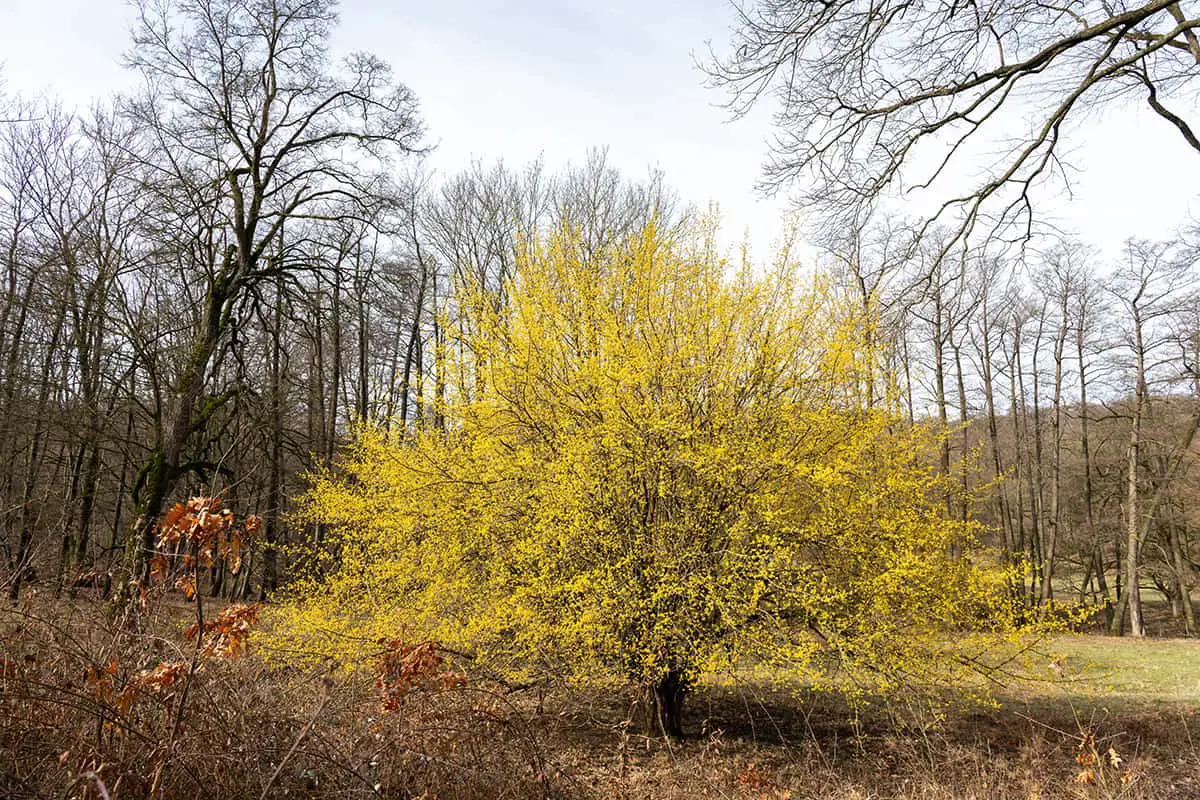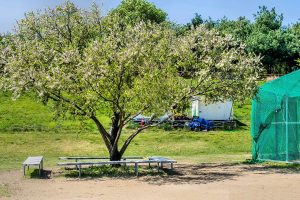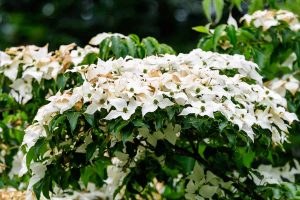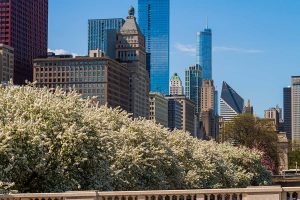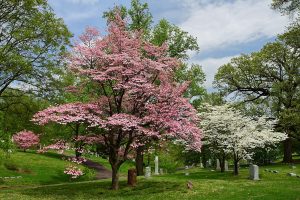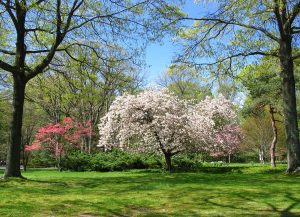Dogwood trees belong to the Cornus genus, which also encompasses a number of shrubs and herbaceous perennials among its species. Dogwood trees can be deciduous or evergreen, depending on the type, but even those which are deciduous are usually capable of holding interest even throughout fall and winter.
Many dogwood trees can reach great heights, such as the Pacific Dogwood (Cornus nuttallii), which tops out at around 40 feet, and the Wedding Cake Dogwood (Cornus controversa ‘Variegata’), which typically grows to minimum heights of 35 feet.
However, if you’re looking for something less statuesque, then there are a number of smaller dogwood trees available which can look great in compact gardens. Here we look at types of dwarf dogwood trees and how to care for them.
Table of Contents
Varieties of Dwarf Dogwood Trees
Tatarian Dogwood
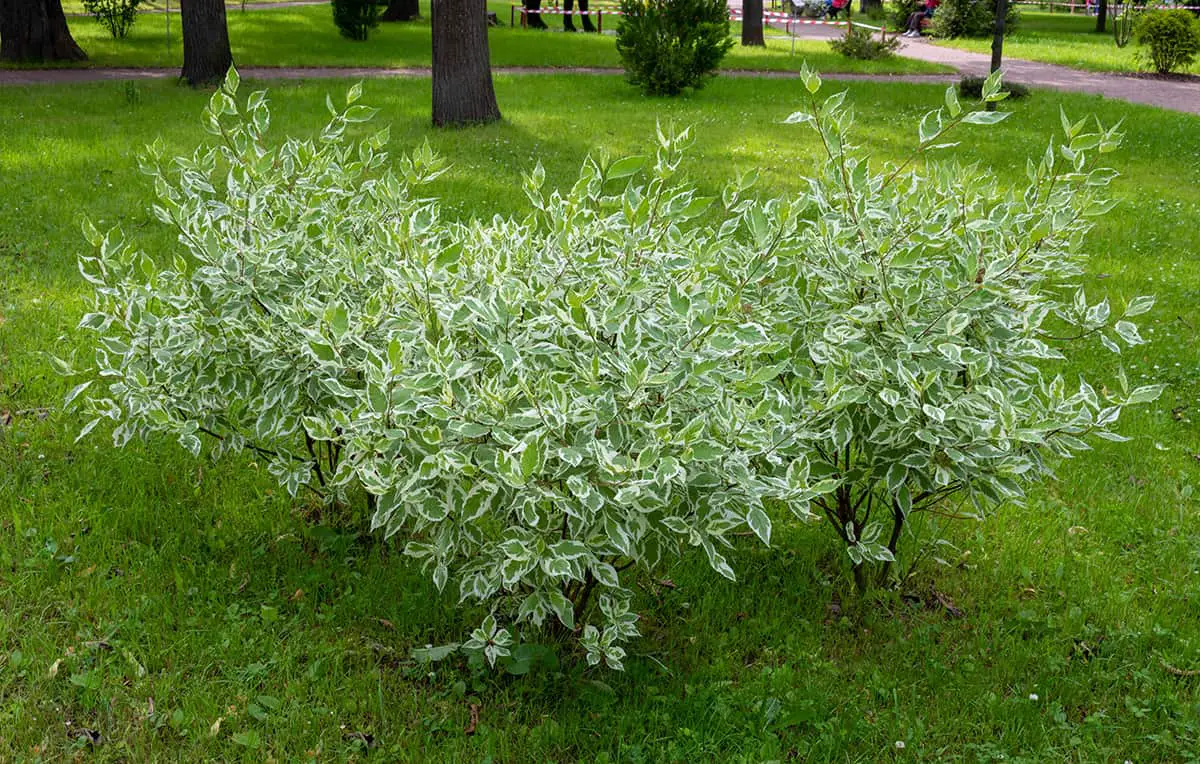
- Botanical name: Cornus alba
- Common names: Tatarian Dogwood, White Dogwood, Siberian Dogwood, Red-Barked Dogwood
- Plant family: Cornaceae
- USDA hardiness zone: 2 – 7
- Mature height: 4 to 10 feet
- Mature spread: 3 to 10 feet
The Tatarian dogwood typically takes the form of a small to medium-sized deciduous shrub, though it can also be grown as a dwarf tree. This plant is known for its ability to grow rapidly and still remains attractive through every season. In spring, flowers in shades of white or cream emerge at the tips of bare stems, followed by ovate leaves, which can be green or variegated with white or gold, depending on the variety of the plant.
The leaves develop rich and vibrant colors as fall approaches and then drop to the ground to reveal twigs in shades of bright red or purple. The Tatarian dogwood hails from Asia, and it will adapt well to most types of planting locations. It can grow in both dry and wet soils and will tolerate full sun or partial shade, though should not be planted in full shade.
Kousa Dogwood
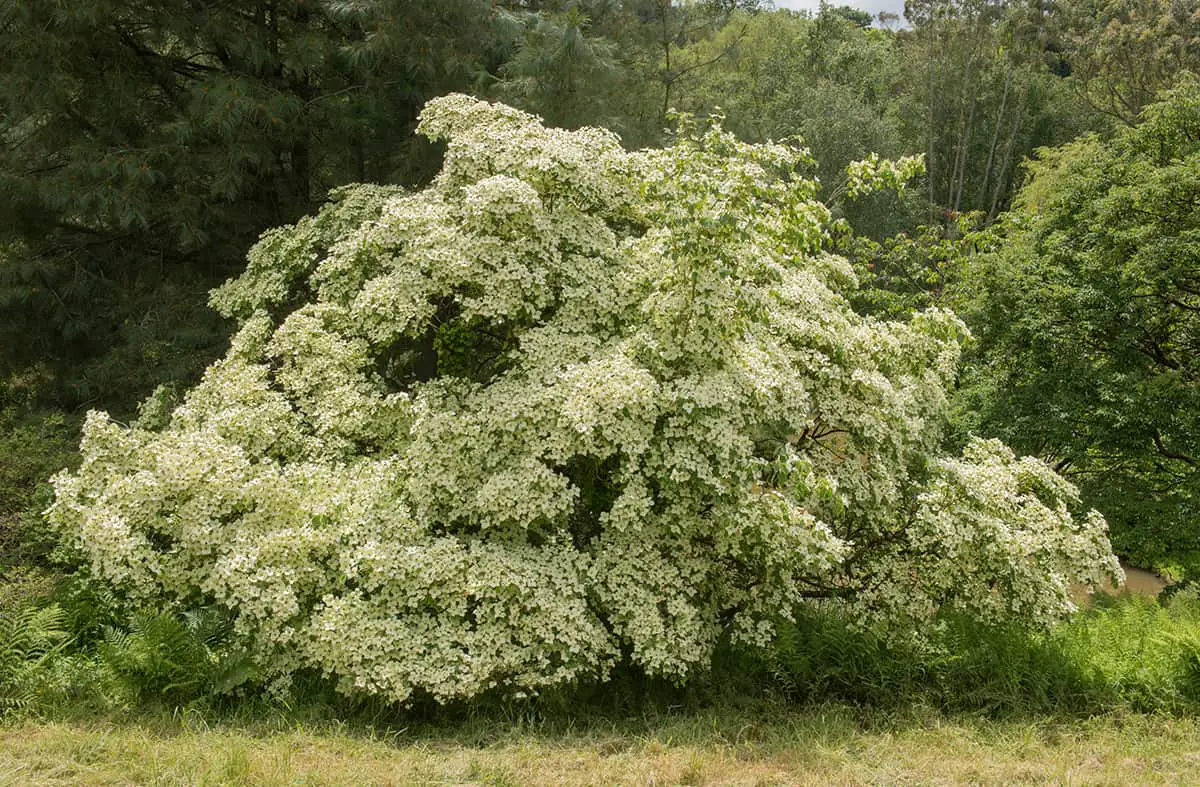
- Botanical name: Cornus kousa
- Common names: Kousa Dogwood, Japanese Dogwood
- Plant family: Cornaceae
- USDA hardiness zone: 5 – 8
- Mature height: 7 to 30 feet
- Mature spread: 3 to 30 feet
This plant can be grown as a small deciduous tree or as a small to medium multi-stemmed shrub. It is native to China, Japan, and Korea, and sometimes goes by the name of Japanese dogwood. The Kousa dogwood flowers heavily in spring, with clusters of star-shaped, compact yellow-green flowers that give way to spherical berries in the summer in shades of orange, red, and pink.
The berries are popular with birds, but if they remain uneaten, they will stay hanging from the tree right through to fall. A dark green canopy of leaves provides shade through summer, and the foliage fades to red in the fall before being shed by the tree. In winter, the tree is bare, but the mottled and exfoliating bark becomes visible to provide interest.
The Kousa dogwood is a slow growing tree, growing to eventual heights of anywhere from 7 to 30 feet. Kousa dogwood ‘Summer Gold’ is particularly compact in size, growing to maximum height of 8 feet, while the Kousa dogwood ‘Scarlet Fire’ will typically reach 25 feet in height. This tree grows best in moderately moist soils, though it can also tolerate short periods of drought. It should be grown in full sun or partial shade.
Cornelian Cherry
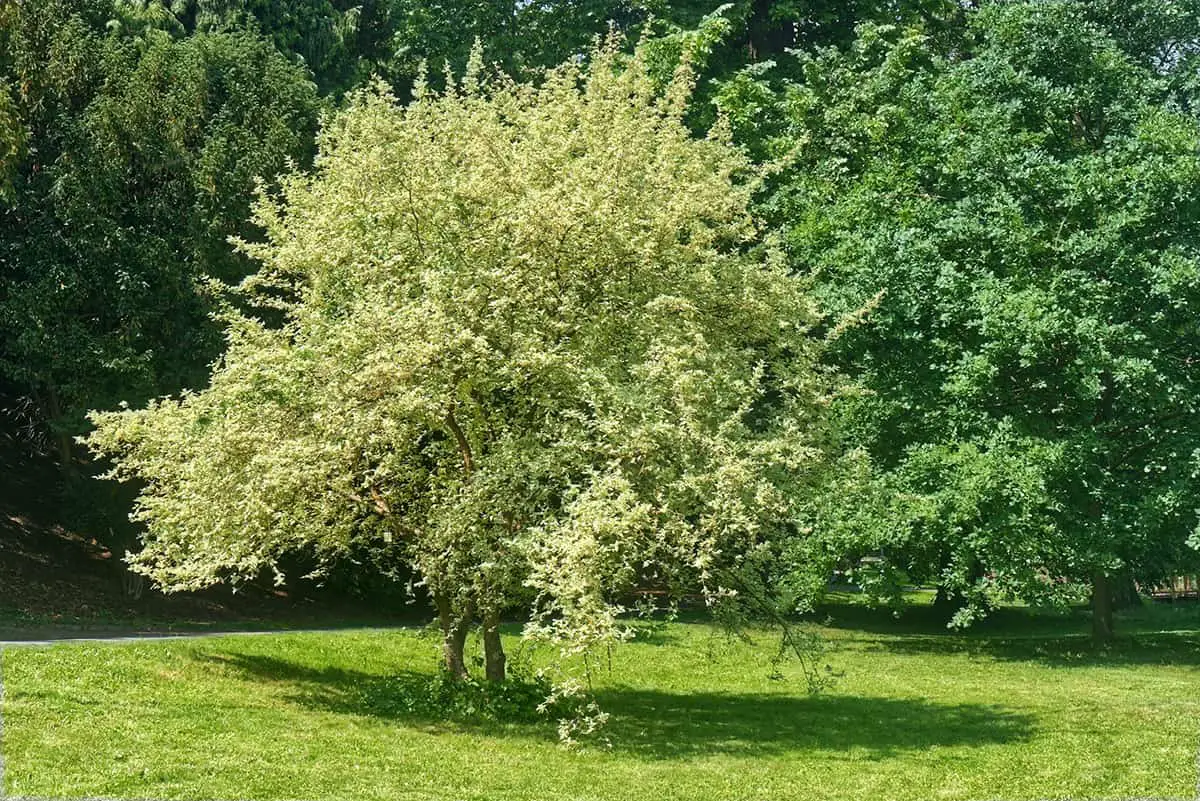
- Botanical name: Cornus mas
- Common names: Cornelian Cherry, Cornel Tree
- Plant family: Cornaceae
- USDA hardiness zone: 5 – 8
- Mature height: 15 to 25 feet
- Mature spread: 12 to 20 feet
This small deciduous tree is native to southwestern Asia and southern Europe. It is not a true cherry tree but produces fruits that strongly resemble cherries. These fruits are edible and sweet and can be used in making preserves such as jams and jellies, as well as sweet syrups. The foliage of this tree is green and develops to deep purple in the fall.
By winter, the leaves have dropped to the ground to reveal the attractive silhouette of the tree. The bark is rough and exfoliating, adding extra interest to the compact tree through winter. It is highly ornamental and provides beauty to the landscape throughout every season of the year. This tree can also be grown as a shrub, and used for hedging or privacy screening. It grows best in full sun or partial shade.
Gray Dogwood
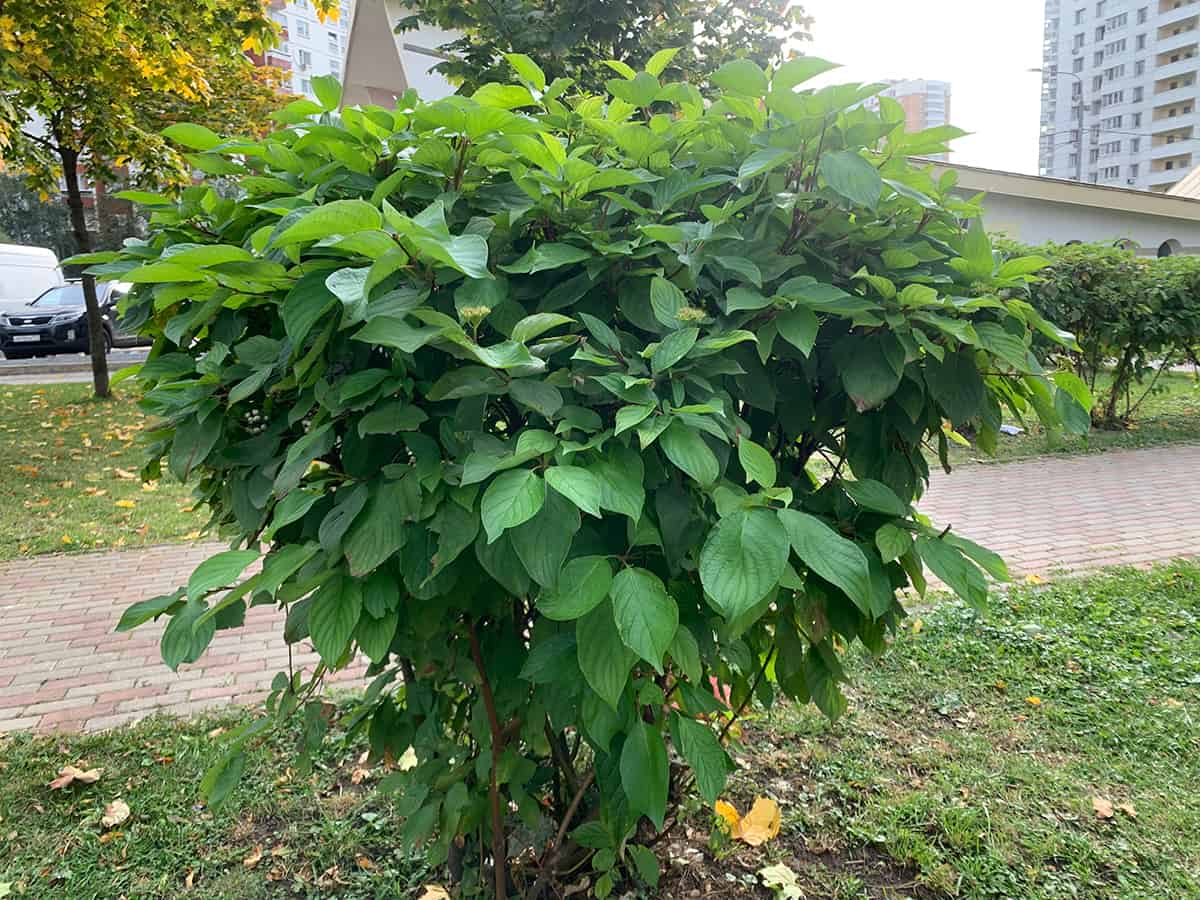
- Botanical name: Cornus racemosa
- Common names: Northern Swamp Dogwood, Panicle Dogwood, Gray Dogwood
- Plant family: Cornaceae
- USDA hardiness zone: 4 – 8
- Mature height: 10 to 15 feet
- Mature spread: 10 to 15 feet
This is a shrub or dwarf tree which grows natively in the northeastern United States. It is showy when in bloom, producing an abundance of star-shaped creamy-colored flowers held together in clusters. The flowers emerge at the end of stems in late spring to early summer, and by late summer, they will have developed into clusters of bright red berries on the dogwood tree.
The berries are very attractive as a source of food for birds, but if not eaten, they will remain on the plant to add another layer of interest. The foliage of the Gray dogwood is blue-green, developing to burgundy in the fall. This is a plant that has strong root systems, making it suitable for erosion control, as well as being highly ornamental. If the Gray dogwood suckers are not pruned, the plant will grow to form a dense thicket. It will adapt well to a range of growing conditions, including dry or wet soils.
Swamp Dogwood
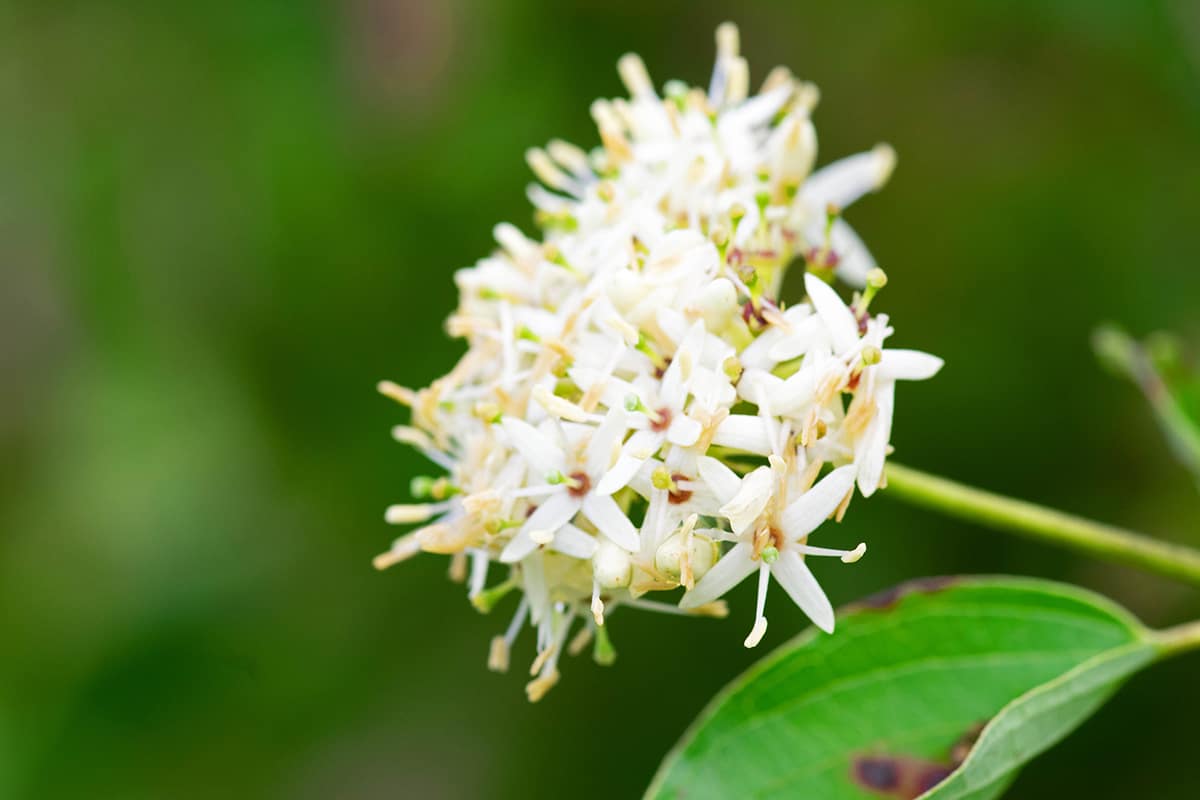
- Botanical name: Cornus foemina
- Common names: Swamp Dogwood, Stiff Dogwood
- Plant family: Cornaceae
- USDA hardiness zone: 6 – 10
- Mature height: 10 to 25 feet
- Mature spread: 10 to 15 feet
This is a deciduous plant that can be grown as a shrub or dwarf tree. It produces clusters of white flowers in late spring which persist for around three weeks. These are followed by black-blue berries which are popular with birds and other wildlife. The foliage of the Swamp dogwood is medium to dark green, and this develops to red in the fall before dropping from the tree to reveal red twigs.
This plant is native to the USA, where it grows in moist soil conditions along streams and riverbanks. It is known as the Swamp dogwood because it grows well in swamp-like regions, thriving in soil that is moist to wet. The tree cannot survive in dry soils, and grows best when there is excess moisture in the soil. It will adapt to almost any lighting exposure, performing well in full sun, partial sun, and even almost complete full shade.
Roughleaf Dogwood
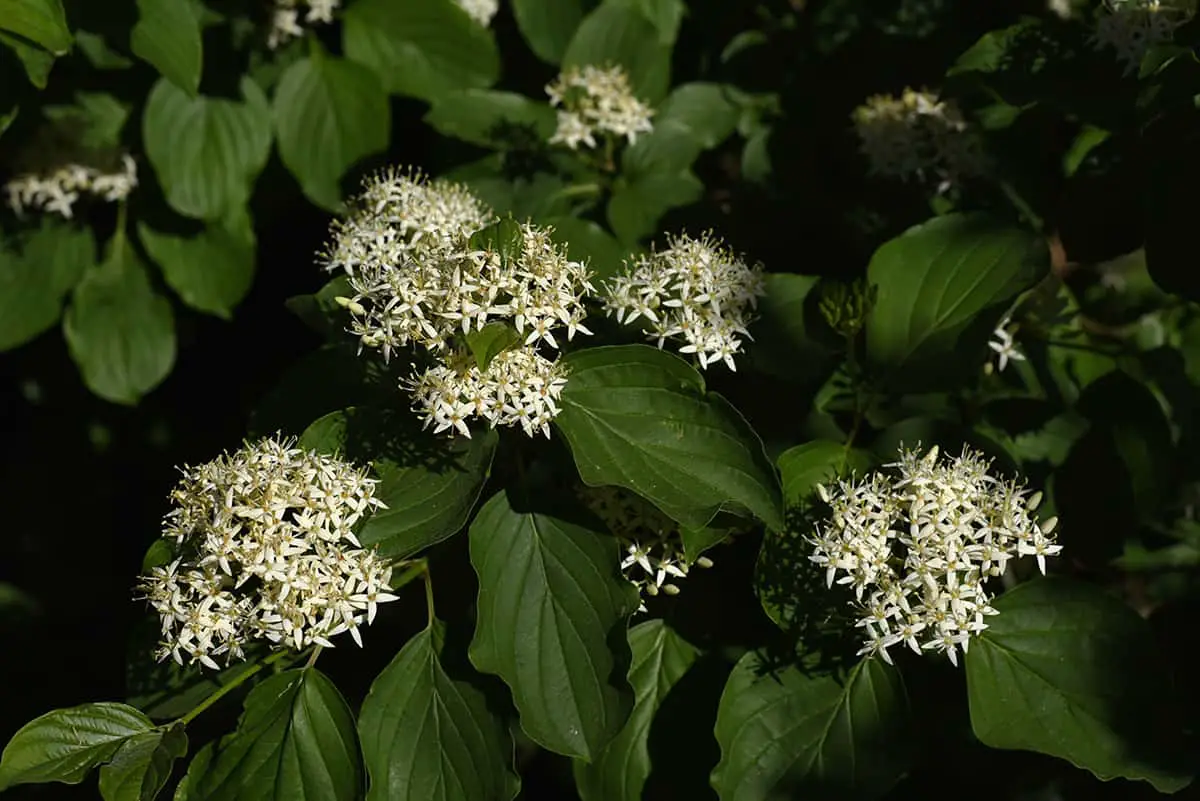
- Botanical name: Cornus drummondii
- Common names: Roughleaf Dogwood, Drummond’s Dogwood
- Plant family: Cornaceae
- USDA hardiness zone: 5 – 8
- Mature height: 6 to 15 feet
- Mature spread: 6 to 15 feet
This plant is native to the eastern region of North America, where it grows as a small to medium-sized shrub or a small tree. It is a great option if you’re looking for a dwarf dogwood tree because it typically grows to a maximum of 15 feet, providing shade and height without taking up much space in the garden.
When grown as a shrub, the Roughleaf dogwood will more typically reach no taller than 6 to 8 feet. This tree is commonly known as the Roughleaf dogwood because it has leaves that have a rough texture on their surface, though on their underside, they are soft and smooth with a texture similar to velvet. In spring, the tree blooms with an abundance of white-yellow flowers. These arrive in clusters that hang from the ends of the stems of the tree.
These are followed by white berries in spring, which are a source of food for birds. The berries are particularly popular with songbirds, which flock to the Roughleaf dogwood en masse. In fall, the foliage fades to purple before dropping from the tree to reveal scaly bark. This tree does extremely well in moist to wet soils, making it an ideal specimen for planting in boggy or swampy areas.
It has a dense growth habit, which also makes it ideal for creating privacy in the landscape. Roughleaf dogwood thrives in full sun to partial shade and will adapt to a range of soil types, including poor soils.
Dwarf Dogwood Tree Care
Planting
Dogwood trees are typically quite adaptable to a variety of soil types, though this will depend on the type of dwarf dogwood tree you have. Many, such as the Roughleaf dogwood and the Swamp dogwood, will adapt to soils which are rich or poor, so it is usually unnecessary to amend soil before planting.
Water
Different types of dogwood thrive with different levels of moisture. Dogwoods which are native to the US prefer moist or wet soils, while others, such as the Tatarian dogwood and the Kousa dogwood, can adapt to moist or dry soils.
Light
In terms of lighting, dwarf dogwood trees are very adaptable. They can thrive in full sun, partial sun and partial shade, and some types will even perform well in almost full shade.
